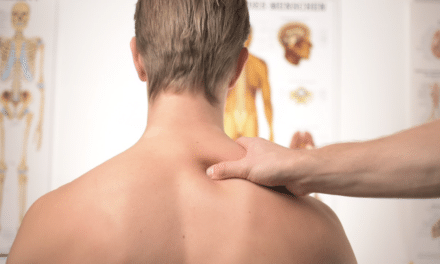One of the measures on WHOOP’s fitness tracker is something called resting heart rate (RHR). WHOOP’s article “Resting Heart Rate: What’s Normal, Why It’s a Sign of Fitness, How to Improve It” states that measuring RHR is problematic because it changes daily and increases with activity. The WHOOP’s fitness tracker uses a dynamic average weighted towards the last period of slow-wave sleep when your body is in its most restful state. I am not aware of anything else that can give reliable readings for RHR. Still, even if you are not using the device, information on what it is, what it should look like and how to improve it should be beneficial knowledge that may benefit you.
What Is The Resting Heart Rate?
The Resting Heart rate is your average heartbeats per minute while your body is in a state of complete rest. A lower resting heart rate generally means that you have better fitness levels and overall health. I find it valuable to measure the trends over time to see if the recovery programs I use are working effectively. The RHR is not the best thing to monitor progress, but it is better than having nothing. Over time, my resting heart rate has become lower, suggesting that everything I am doing could be contributing to this positive trend. The American Heart Association states that a standard resting heart rate is usually between 60 and 100 beats per minute. Athletes and people who are relatively active may have an RHR of 40 bpm. Additionally, women tend to have a higher RHR than men because they have smaller hearts that need to pump more to circulate the same amount of oxygen.
Why Is Having a Lower RHR Generally Better?
The article explains that when your heart rate or RHR is lower, the heart does not have to work as hard to pump oxygen and blood throughout the body. Thus, a lower heart rate means your heart is more efficient at pumping blood, which enhances the transport of more oxygen and nutrients in the body. Due to the blood, nutrients, and oxygen is essential for recovery, it is beneficial for muscular dystrophy as they can not recover as effectively as normal muscles. Also, the heart is a muscle and making sure it does not have to work as hard may prevent damage to the heart.
What Might Cause a Higher RHR?
Since a low RHR is a sign of a stronger heart, it is essential to identify factors causing a higher one and change what you can to help your heart. The article identifies strenuous exercise or overtraining, stress and anxiety, sleep deprivation and fatigue, dehydration, caffeine or alcohol consumption, smoking cigarettes or using other drugs, illness or underlying health conditions, and medication side effects as factors that may lead to a higher RHR. Some factors like underlying health conditions and medication side effects may be out of your control, which means you probably will not change your RHR that way. However, if you make sure you do not overtrain, practice meditation and change your mindset to reduce stress, and avoid drug and alcohol consumption, they are effective ways to help your RHR.
What Can Help You Lower Your RHR?
One of the best things to lower your resting heart rate is exercise. The best exercises to accomplish this appear to be aerobic exercises like running, cycling, swimming, rowing, etc. These exercises build cardiovascular strength and increase circulation within your body, which translates to your heart rate not needing to pump as hard. Moreover, effective strategies involve limiting the factors that cause an RHR, which I discussed previously. Remaining hydrated, relaxation exercises (guided breathing, meditation, stretching, or yoga), calming activities, a balanced diet with proper nutrition, and consistently sleeping well are the easiest things for most people to do to help their RHR. Some other factors include avoiding alcohol and avoiding stimulants (nicotine, caffeine).
What Are Some Key Take-Aways From RHR?
The WHOOP fitness tracker has been life-changing for me as it gives me so much information each day and all I have to do is wear it all the time. Due to this, I would recommend purchasing the device as an investment in improving your health. Even if you do not own a WHOOP, understand that helping your heart rate become more efficient and having it pump less can have significant health benefits in your body. Hopefully, you take the time to help lower your RHR and heart rate in general by practising some of the suggestions listed above.





